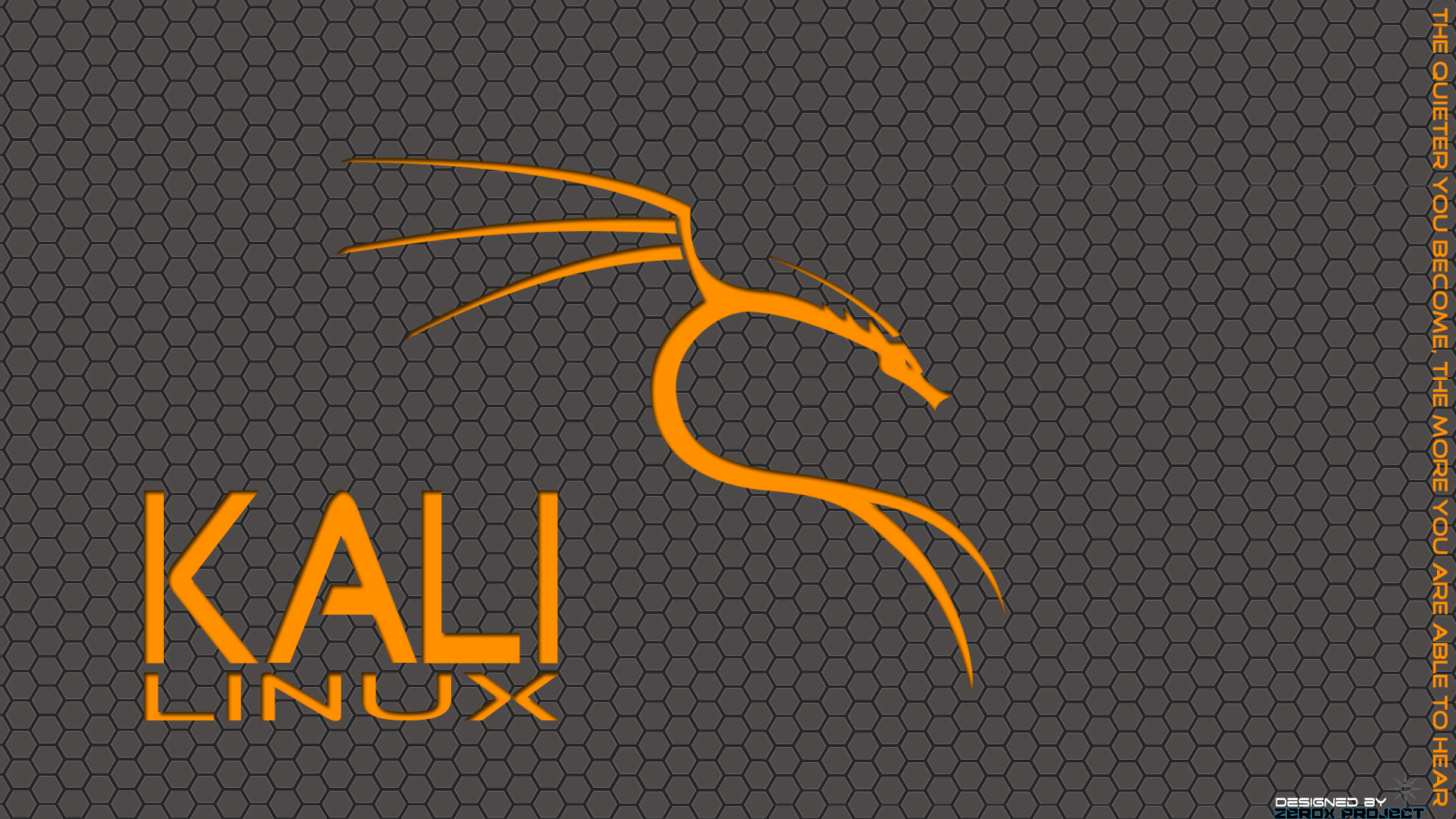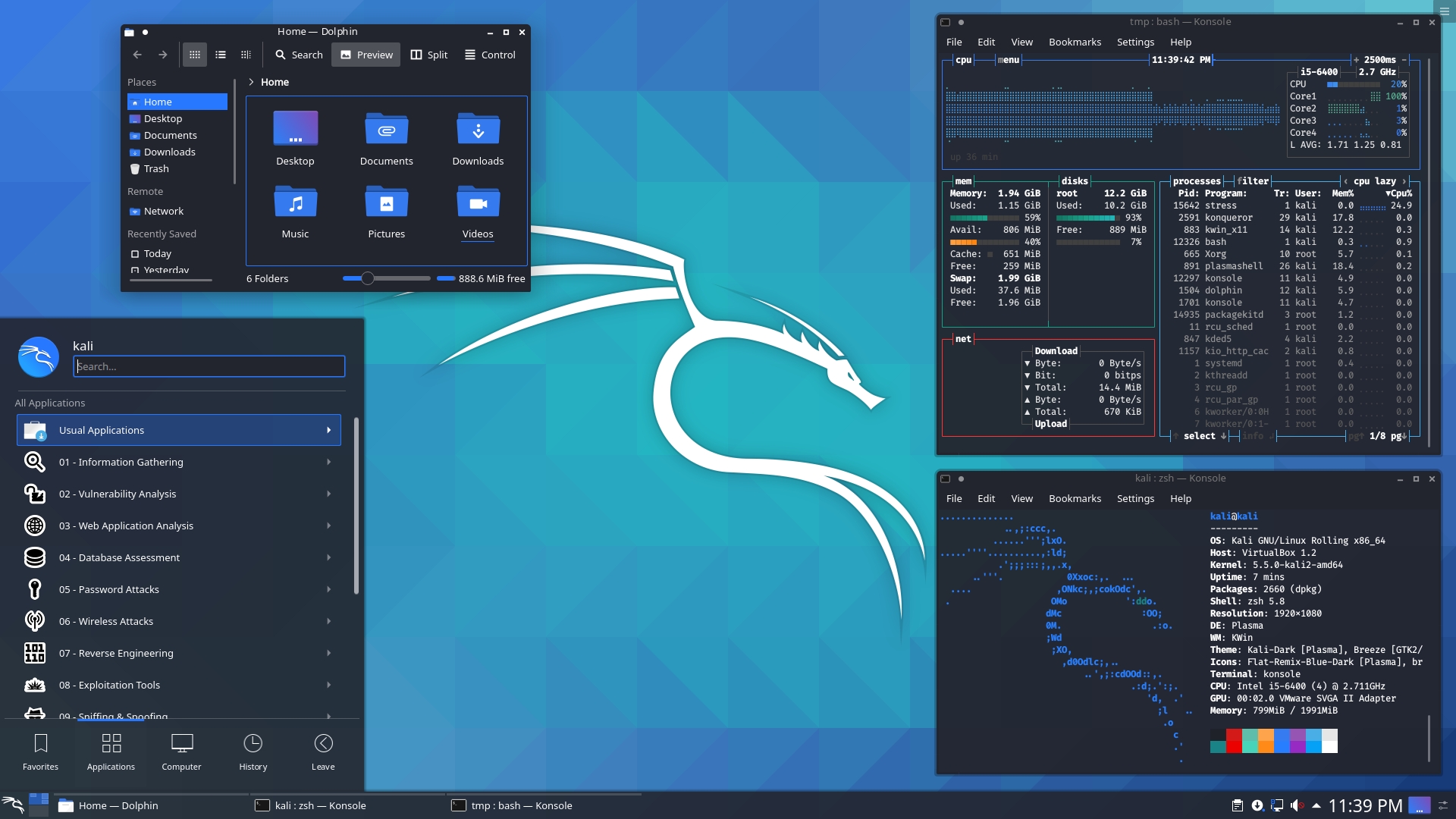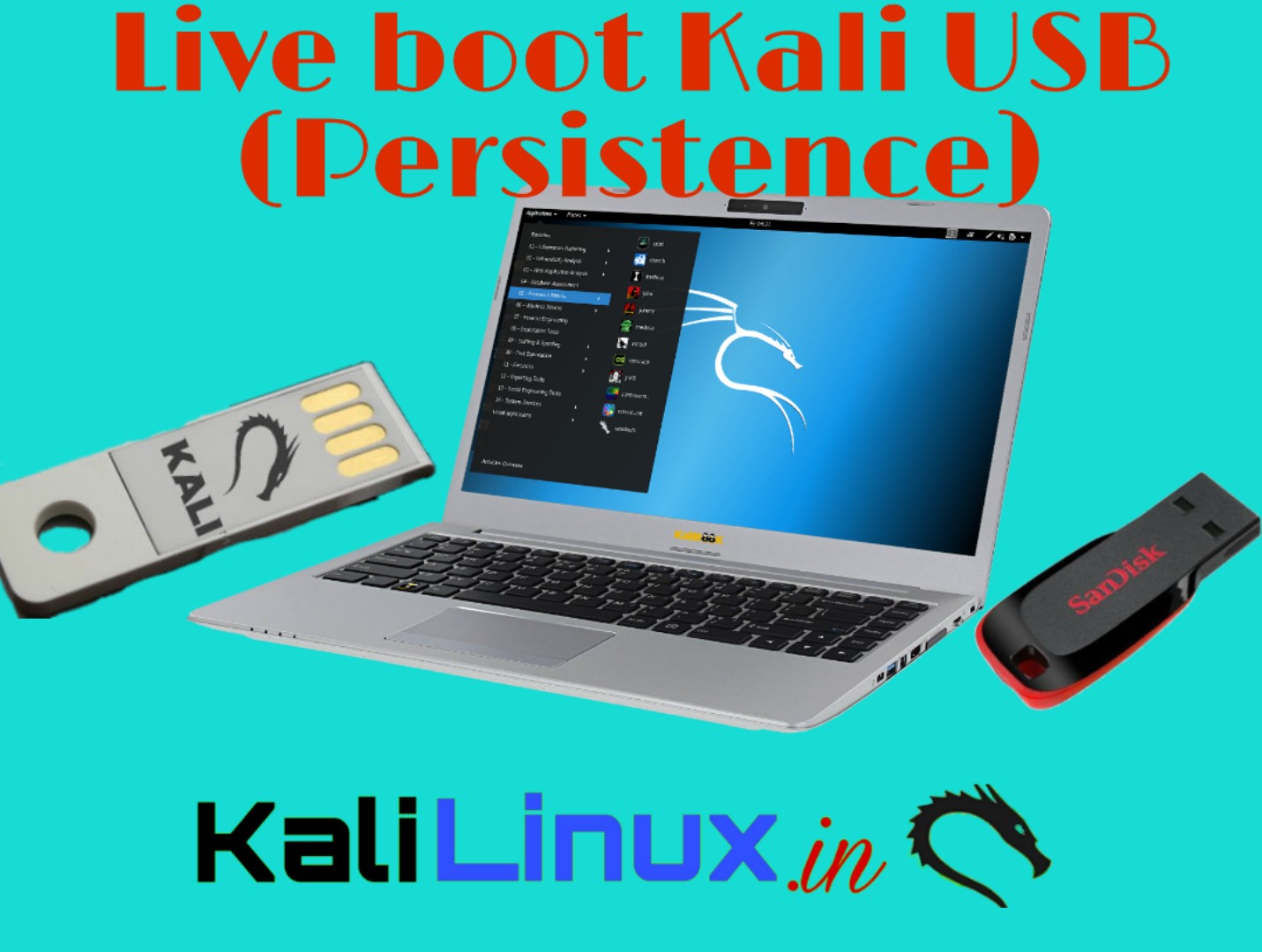
It is usually preferred to find a way to access the boot menu when starting up the computer, as this will only be a temporary configuration. Note: You can also edit the boot menu configuration in the BIOS menu, but that is permanent and may need to be changed post-installation. The Kali Installer Menu | Credit: Mercury You should be welcomed with the Kali Installer Menu. At startup, you’ll have to access the boot menu and then choose the stick you just made. A Legacy BIOS | Credit: VMwareĪfter disabling secure boot, we can finally boot to the drive. It usually involves spamming (continuously pressing) a key on your keyboard when the computer starts to boot.Īs mentioned before, if you are dual booting, take note of the partition size you made for Kali so you don’t overwrite your other OS (been there, done that 😢).
Kali linux live how to#
You may need to do a little research into how to access your BIOS and boot menu. To boot the computer from the new Kali USB stick, you’ll need to disable secure boot if it is enabled in the BIOS settings. Hit the Start Button and wait for the image to be written to the stick (This takes some time so, relax 😌). How to prepare the USB stick | Credit: Mercuryīack to easier ground now, you can leave the default format options. This should make the drive more compatible with your computer if it is a very old one. You could also go to the advanced drive properties and check the box with ‘Add fixes for old BIOSes’.

If the drive doesn’t show up in the boot menu, change to the other option and try again. Pick GPT if it is a newer computer and using a UEFI BIOS. Summary of it all: Pick the MBR option if the computer is old or using a legacy BIOS. You may not be able to boot your drive if you pick the wrong option here. Most computers have one of the following formats: GPT (GUID Partition Table) or MBR (Master Boot Record). mkv – they are both videos but different formats. Think of it like your video files saved in.
Kali linux live software#
The Rufus Software | Credit: Mercuryīefore we proceed, a quick lesson: a partition scheme/table is the format in which a hard disk saves data.
Kali linux live iso#
Under ‘Boot selection’ select your newly downloaded Kali iso file. In order to make the stick bootable, we are going to run Rufus and make a few changes.Ĭonnect the stick and select it under the ‘Device’ options.

You can download Rufus from rufus.ie (Rufus 3.18 as at the time of writing). The Installer option | Credit: Step 2: Create a bootable drive For torrent lovers, the torrent is also available. Choose the tab applicable to your system, and download the Installer. There are options for 64-bit, 32-bit, and Apple M1 here (though I have no clue why the last one exists). Here you are given a lot of options, but go for the ‘Bare Metal’. Operating systems are usually packed like this (but also malicious software, so be careful where you get them💀). What you're trying to get is an iso file, which is just a way of packaging software.
Kali linux live install#
How to Install Kali Linux on Your Computer – Step by Step Step 1: Download the iso file A really cool head (Trust me, you’ll need it 🥶).A Computer (Minimum Requirements: 20GB Hard Disk space, 2GB RAM, Intel Core i3 or AMD E1 equivalent).Now you are going to need some ingredients for this masterpiece: If you wish to dual boot your machine, you will need to partition your hard drive to give Kali at least 20 GB of hard disk space and then install it on that partition.


Requirementsīefore we carry on, you should know that this is the process for installing on the bare system itself and you should do this with extreme caution. Let’s jump right in and learn how to install Kali Linux on your computer. From Metasploit to JohntheRipper to the one and only Aircrack-ng, this OS has it all.īut enough of the history lesson. It’s basically an ethical hacker's dream operating system, because it has most of the tools you'll ever need built-in. Kali Linux (formerly known as BackTrack) is an open-source Linux distro developed and funded by Offensive Security.


 0 kommentar(er)
0 kommentar(er)
